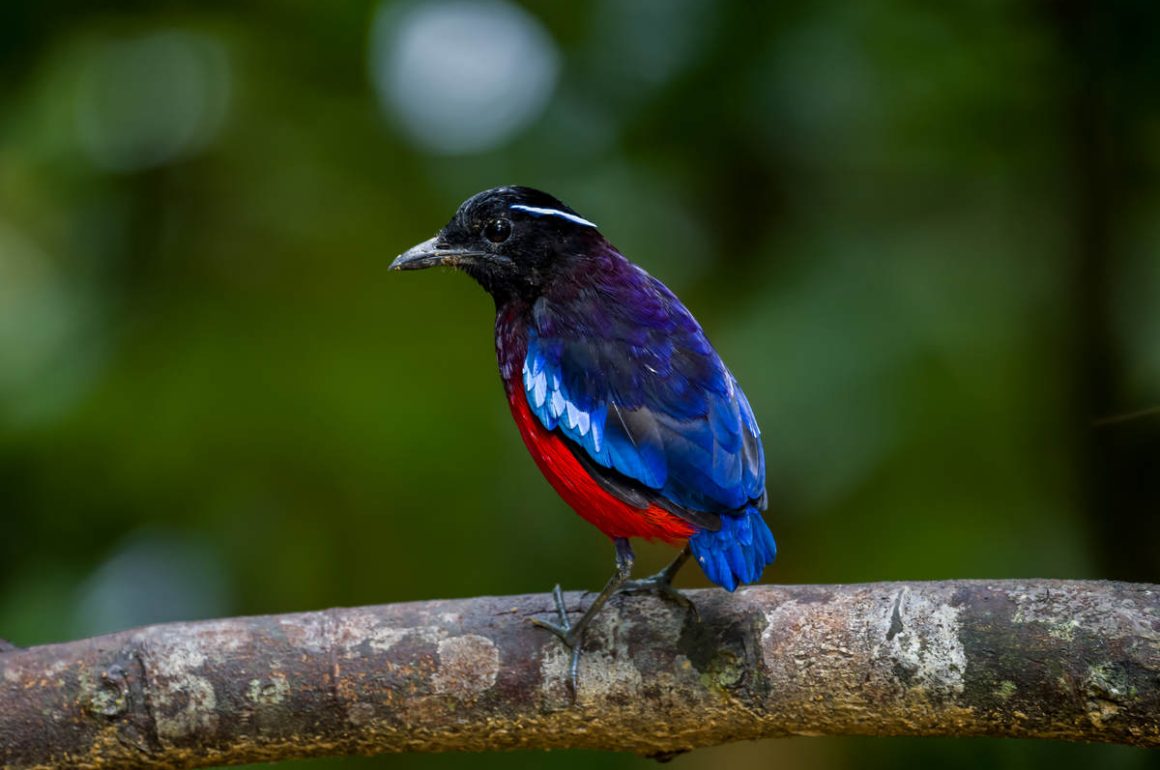
Well – I only saw two species, the most common ones at Sepilok, Sabah, Borneo, Malaysia. But they are well worth their own post, even though I cannot really write too much about them. Not that they need many words anyway.
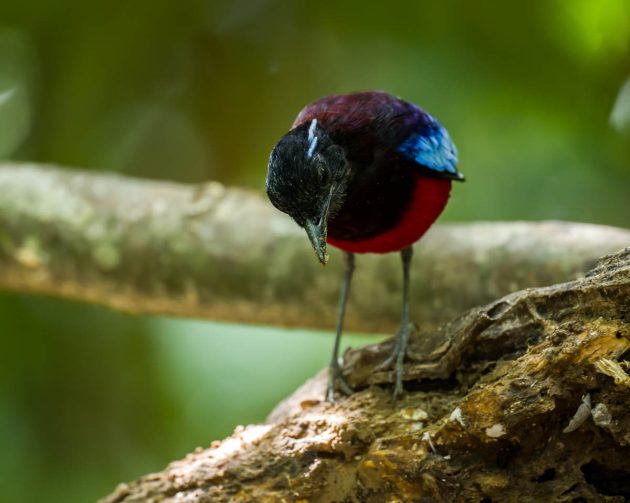
One is the Black-crowned Pitta, a species endemic to Borneo with a number of aliases including black-headed pitta, black-and-crimson pitta, black-and-scarlet pitta, and black-crowned garnet pitta (if you want to identify it by its monograms on its shirts, they always start with the letter B and end with a P).
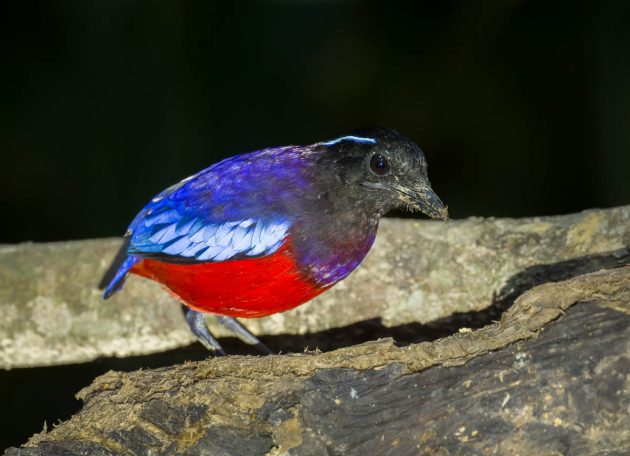
The description of this pitta on eBird does its looks justice: “Dazzling pitta … Midnight blue above and blinding scarlet below, with a dark head, bright blue wing coverts, and a glowing silver line trailing backward behind the eye.” Makes me feel a bit sad nobody has ever called me a dazzling man …
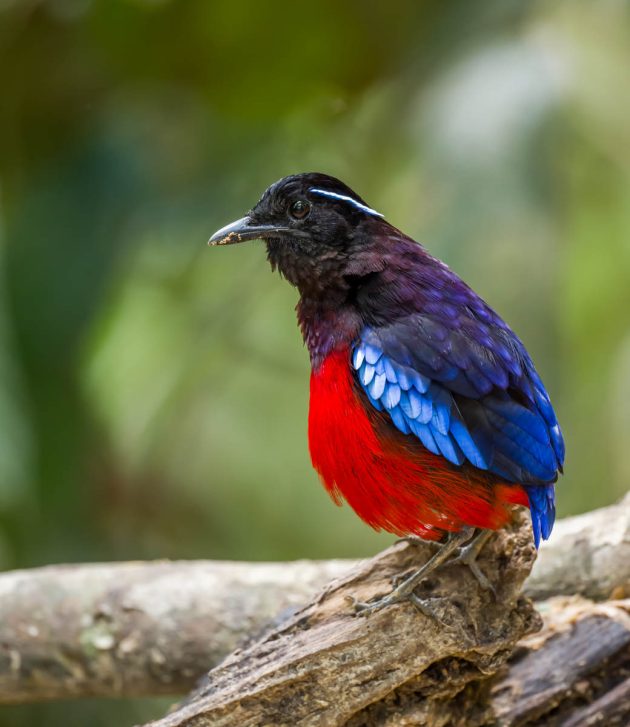
The Latin species name of ussheri is derived from one Herbert Taylor John Ussher 1836-1880), a British diplomat who presumably contributed his fair share of colonial violence and racism (otherwise he would not have been promoted a number of times) but who also was a naturalist who wrote “Notes on the ornithology of the Gold Coast”.
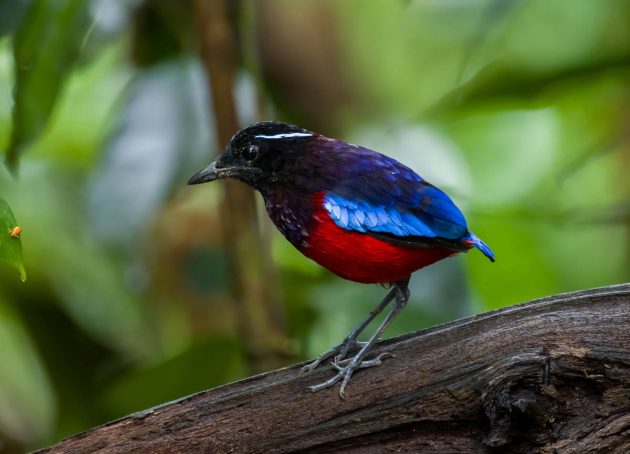
Typical for this type of person, he died young, at about age 44 – not sure why but Europeans were generally not very good at coping with tropical diseases. The British then posthumously named a fort after him (Ussher Fort in Ghana) – not a great consolation when you are already dead, but then, not many things are. Wikipedia helpfully adds that nowadays, the fort opening hours are 9:00am to 4:30pm from Mondays to Saturdays including public holidays.
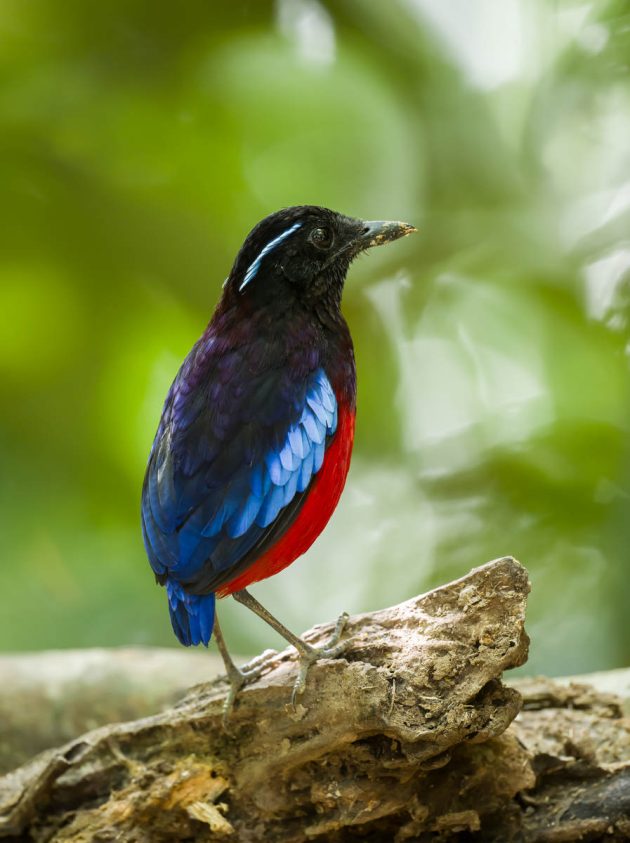
The call of this pitta is interesting and quite characteristic – the HBW calls it ventriloquial, which means “The art of projecting one’s voice so that it seems to come from another source, as from a wooden figure”.
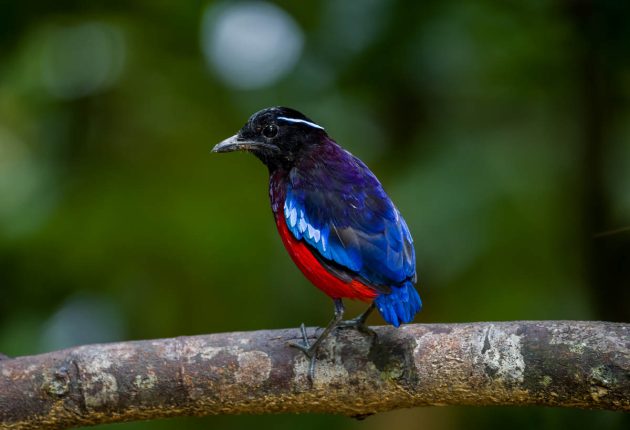
And indeed, when I first saw the pitta, I thought there was a second one around but then realized that the one I saw was making the sound I heard – but without opening its bill and without the sound obviously coming from the direction of the bird.
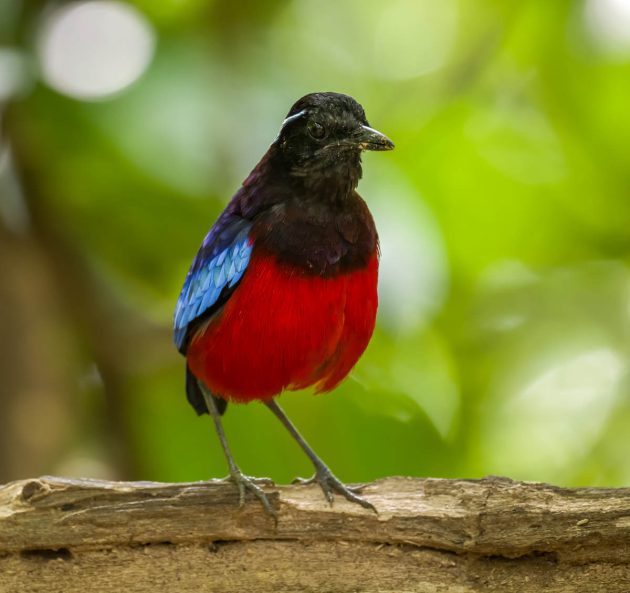
The HBW is a bit uncertain about its conservation status, calling it Least Concern in one sentence and then Near Threatened in the next. It might be about time for the HBW (now hosted by Cornell University) to hire some part-time editor using the money I pay for my subscription to the site.
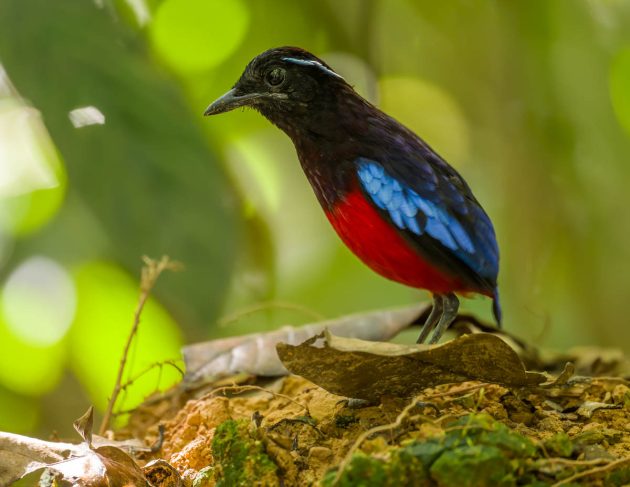
One study found that there seems to be some work sharing among the breeding adults – the male had a higher visitation rate of the nest while the female was the only one that brooded. If Adam Smith had known this, he would have pointed out that his pin factory example more or less has the same rationale behind it.
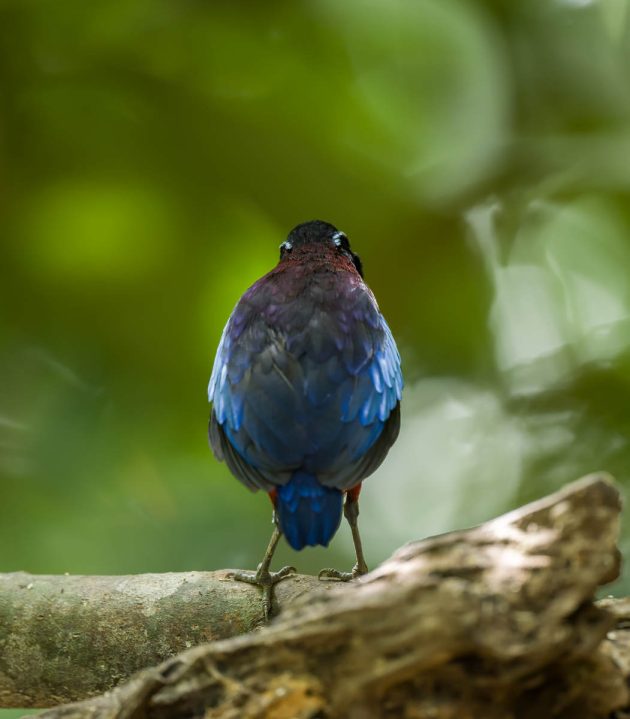
The other is the Hooded Pitta – a pitta that is a bit easier to observe as it comes out in the open a bit more. It also happily calls in the early morning, at least where I found it, a service highly appreciated by bird watchers like me.
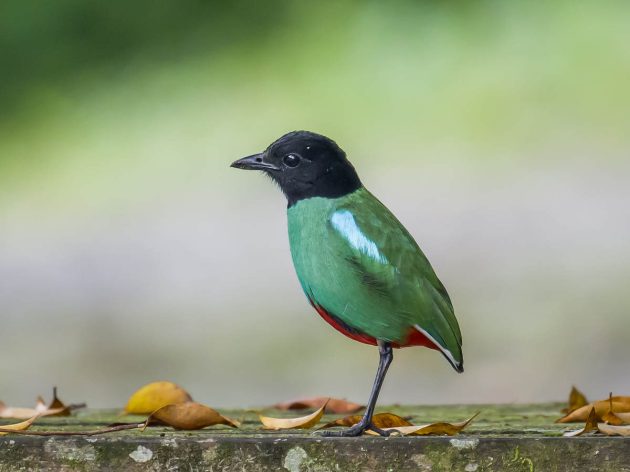
It is fun to watch and listen to – see here and here.
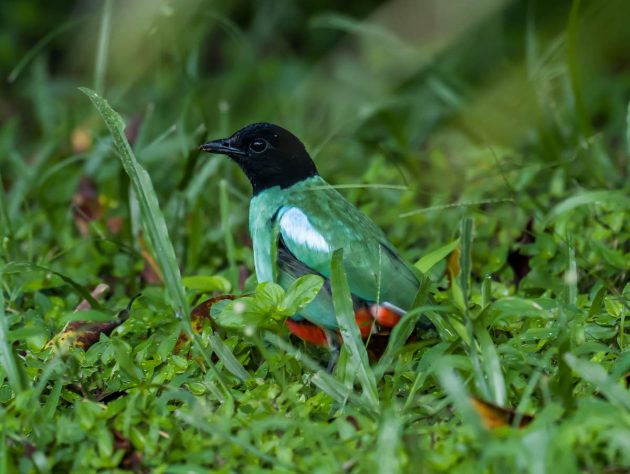
However, it is cursed with a rather unappealing species name – sordida, or “shabby”, which makes you wonder whether the person giving the species this name had actually ever seen the bird. As it does not look shabby at all.
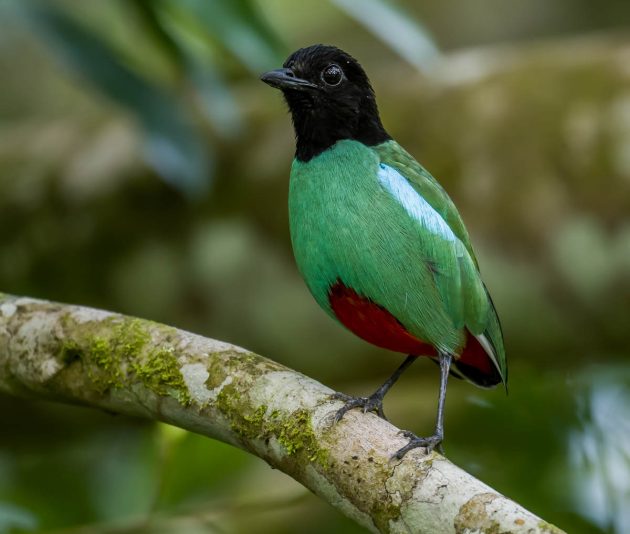
In fact, eBird rightly calls it a “dark-headed beauty of tropical forests”.
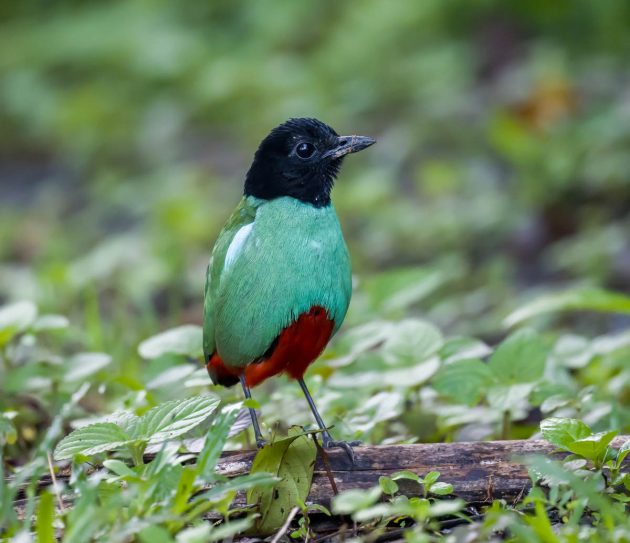
The HBW states that there are 12 subspecies but provides only 2 images, one of a male and one of a female, both of which look exactly the same to me, except that the female looks a bit fatter (potential discrimination?).
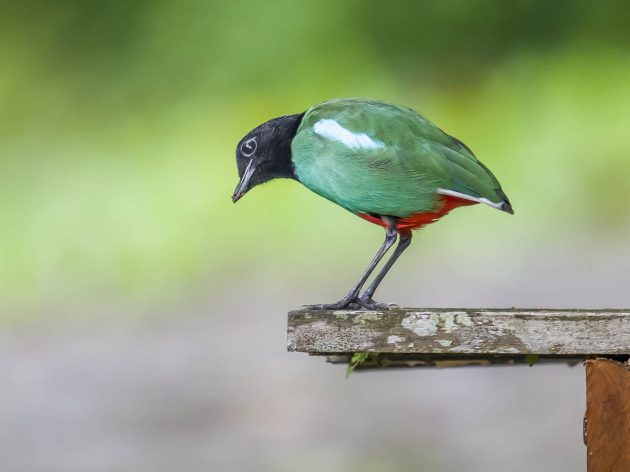
Reportedly, it is the most widespread of all pittas, which apparently requires the existence of so many subspecies. Or is this the wrong logic?
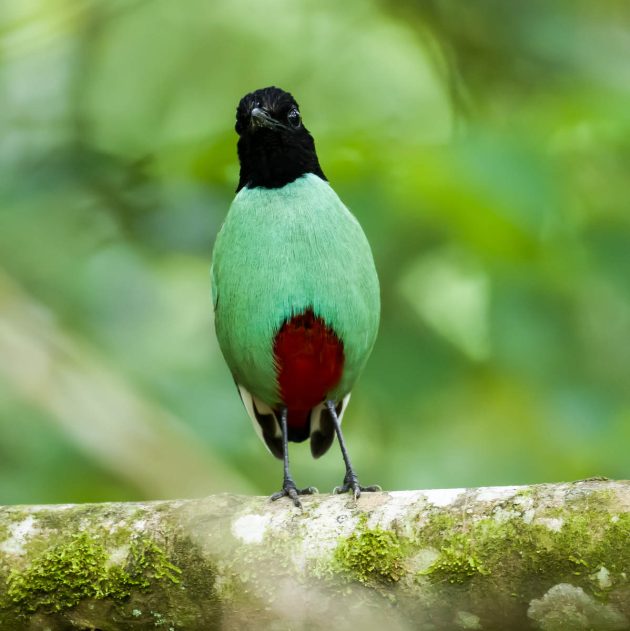
Unfortunately, the Hooded Pitta is a frequent victim of collisions with buildings, for example in Singapore (source).
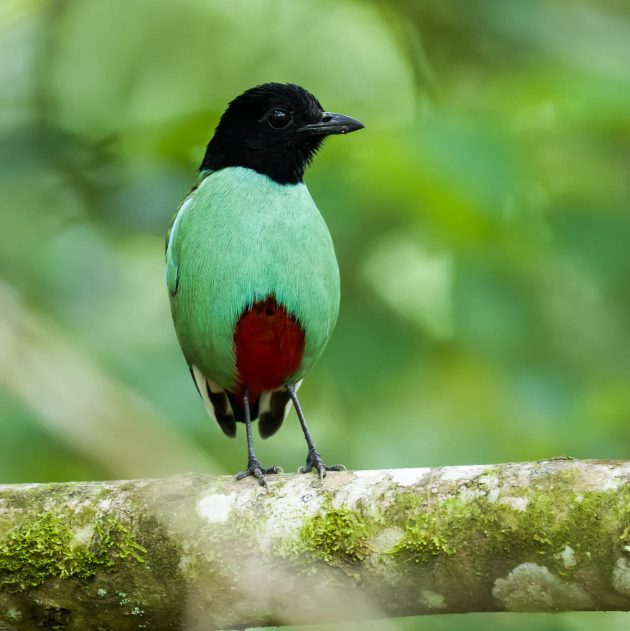
Sadly, according to the HBW, this pitta is also frequently caught and sold in the cage bird trade in Indonesia despite having protected status. It might be a good idea not only to pass laws but also to enforce them – just a thought.
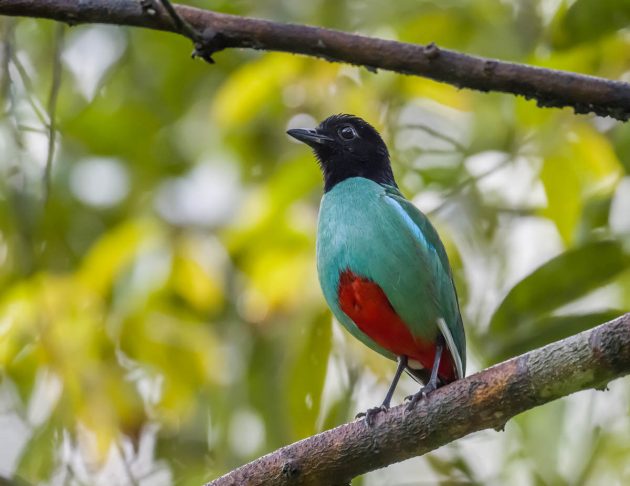
Hooded Pittas are even taken as food in Assam, according to the HBW. Humanity is overrated.
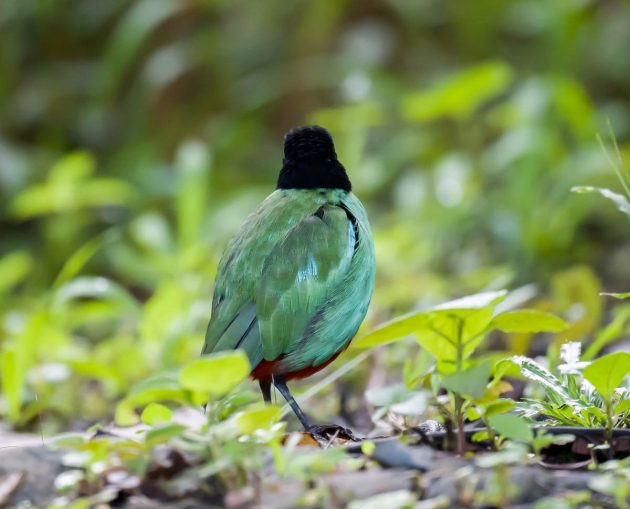







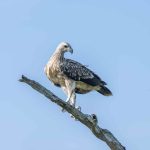
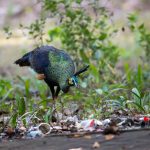

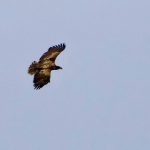

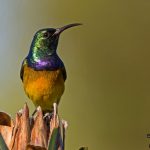
Amazing photos and clever commentary. What more can we ask?